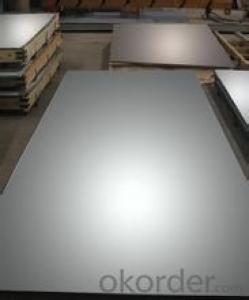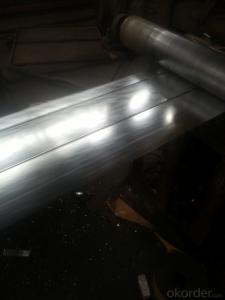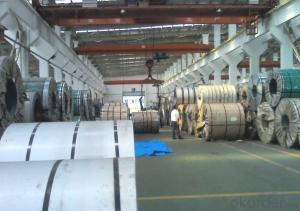Premium Colored Corrugated Roofing Metal Sheet
- Loading Port:
- Tianjin
- Payment Terms:
- TT OR LC
- Min Order Qty:
- 50 m.t.
- Supply Capability:
- 2000 m.t./month
OKorder Service Pledge
OKorder Financial Service
You Might Also Like
Item specifice
Product Brief Introduction
Premium Colored Corrugated Roofing Steel Sheet
--- Corrosion resistance: Pre-coated steel offers excellent corrosion resistance achived through continuous hot DIP galvanization and corrosion resistant primer/polyester coating. Protection is achieved when zinc and steel are together in the presence of moisture; The zinc protects the steel by galvanic action
Product Features
. Traditional aesthetics outlook
. Suitable for new house or renovation.
. Less joints, watertight
. Long life service
. Tedun also provide relative ridge cap, fasteners and other accessories
Product Specification
Standard:ASTM, GB,JIS,JIS G3302 ASTM 755 EN10169
Grade: DX51D CGCC CS
Thickness: 0.13mm~3.0mm,
Width: 1250,600-1250mm
Coil weight:3-12 MT
Coil ID:508/610mm
Chemical composition:
C | Si | Mn | Cr | Ni | P | S |
0.150 | 0.476 | 11.231 | 12.50 | 0.900 | 0.039 | 0.010
|
FAQ
How long will we receive the goods ?
45days after receiving workable L/C
2. how do you control the quality ?
we have our own quality control department ,we will arrange QC person to see the production line ,when goods finish ,before shipment ,our QC person will check the quality as per our test report request ,if the goods is ok ,then we issue the test report ,and we allow the goods shipping ,otherwise will not allow ship the goods.

- Q:What are the properties of high-strength steel strips?
- High-strength steel strips possess excellent mechanical properties, including high tensile strength, good toughness, and high fatigue resistance. They also exhibit good formability, enabling them to be easily shaped and fabricated. Additionally, high-strength steel strips have improved corrosion resistance and can withstand extreme temperatures, making them suitable for various demanding applications in industries such as automotive, aerospace, and construction.
- Q:How are steel strips tested for straightness?
- Steel strips are tested for straightness using a variety of methods. One common method is visual inspection, where the strip is examined by trained professionals who look for any visible bending or warping. Another method is the use of straightedges or precision rulers, which are placed along the length of the strip to check for any deviations from a straight line. In addition to visual inspection, advanced techniques such as laser measurement systems can also be used. These systems use lasers to accurately measure the straightness of the steel strip, providing precise and quantitative data. The laser beam is directed along the length of the strip, and any deviations from a straight line are detected and recorded. This method allows for more accurate and objective assessment of the strip's straightness. Furthermore, mechanical tests can be conducted to assess the straightness of steel strips. These tests involve subjecting the strip to certain forces or stress, such as tension or compression, and measuring the resulting deformation. Any significant bending or curvature observed during these tests indicates a lack of straightness. Overall, steel strips undergo a thorough testing process to ensure their straightness. These tests involve visual inspection, the use of straightedges or precision rulers, laser measurement systems, and mechanical tests. By employing these methods, manufacturers can guarantee that steel strips meet the required straightness standards for various applications.
- Q:Can steel strips be used for making tools or machinery parts?
- Yes, steel strips can be used for making tools or machinery parts. Steel strips are often used in various industries for their strength, durability, and versatility. They can be shaped, cut, and formed into different components required for tools or machinery parts, providing excellent performance and reliability.
- Q:How are steel strips processed for soundproofing?
- Steel strips are processed for soundproofing by applying a layer of sound-absorbing material onto the surface of the strips. This material helps to reduce noise transmission by absorbing sound waves and minimizing vibrations. Additionally, the steel strips may undergo further treatments such as perforation or lamination to enhance their acoustic properties.
- Q:How do steel strips contribute to the strength of structures?
- Steel strips contribute to the strength of structures by providing structural support and reinforcement. They are often used in construction to increase the load-bearing capacity of beams, columns, and other structural elements. The high tensile strength and durability of steel make it an ideal material for withstanding heavy loads and resisting bending or warping. Additionally, steel strips can be strategically placed in specific areas of a structure to enhance its overall stability and prevent failure under stress or extreme conditions.
- Q:What are the different surface buffing methods for steel strips?
- There are several different surface buffing methods for steel strips, including mechanical buffing, chemical buffing, and electrochemical buffing. Mechanical buffing involves using abrasive pads or wheels to remove surface imperfections and create a smooth finish. Chemical buffing uses chemical compounds to remove oxidation or stains from the steel surface. Electrochemical buffing utilizes an electrical current to remove surface contaminants and create a polished finish. Each method has its own advantages and is chosen based on the desired outcome and the specific requirements of the steel strip.
- Q:Can steel strips be used in the production of surgical implants?
- Indeed, surgical implants can be manufactured using steel strips. Steel, due to its robustness, endurance, and biocompatible properties, is extensively utilized in the medical sector. To guarantee stability and long-term effectiveness within the human body, surgical implants like orthopedic plates, screws, and pins often necessitate materials possessing these attributes. Steel strips can be manipulated, formed, and sterilized to fulfill the specific criteria of surgical implants. Another advantage of steel is its resistance to corrosion, a crucial aspect in preventing complications or adverse reactions in the patient's body. However, it is worth noting that the type of steel employed in surgical implants must adhere to stringent standards and regulations, such as ISO 5832, to ensure its biocompatibility and safety for medical applications.
- Q:Can steel strips be used in the manufacturing of hand tools?
- Yes, steel strips can be used in the manufacturing of hand tools. Steel strips are often used as the raw material for various hand tools such as wrenches, screwdrivers, and pliers, as they provide strength, durability, and resistance to wear and tear. The steel strips can be shaped and molded into different tool designs, ensuring the desired functionality and performance.
- Q:What is the length tolerance of steel strips?
- The length tolerance of steel strips can vary depending on the specific type and grade, but generally it is around ± 0.2% to ± 0.5% of the specified length.
- Q:What is the purpose of hardening and tempering steel strips?
- The purpose of hardening and tempering steel strips is to enhance their mechanical properties and improve their overall performance in various applications. Hardening steel strips involves heating them to a specific temperature, known as the critical temperature, and then rapidly cooling them, typically by quenching them in oil, water, or air. This rapid cooling process transforms the steel's crystalline structure, resulting in a harder and stronger material. Hardened steel strips are highly resistant to deformation, wear, and abrasion, making them ideal for applications that require high strength and durability, such as cutting tools, springs, and machine components. However, hardened steel strips can become brittle and prone to cracking. This is where tempering comes into play. Tempering is a process that involves reheating the hardened steel strips to a lower temperature and then cooling them slowly. This controlled heating and cooling process allows for the adjustment of the steel's hardness and toughness, balancing its strength with its ability to withstand impacts and shocks. By hardening and tempering steel strips, manufacturers can tailor the material's properties to meet specific requirements. This enables the steel to exhibit a combination of hardness, strength, toughness, and flexibility that is suitable for a wide range of applications. Additionally, hardening and tempering can also improve the steel's resistance to corrosion and extend its service life.
1. Manufacturer Overview |
|
|---|---|
| Location | |
| Year Established | |
| Annual Output Value | |
| Main Markets | |
| Company Certifications | |
2. Manufacturer Certificates |
|
|---|---|
| a) Certification Name | |
| Range | |
| Reference | |
| Validity Period | |
3. Manufacturer Capability |
|
|---|---|
| a)Trade Capacity | |
| Nearest Port | |
| Export Percentage | |
| No.of Employees in Trade Department | |
| Language Spoken: | |
| b)Factory Information | |
| Factory Size: | |
| No. of Production Lines | |
| Contract Manufacturing | |
| Product Price Range | |
Send your message to us
Premium Colored Corrugated Roofing Metal Sheet
- Loading Port:
- Tianjin
- Payment Terms:
- TT OR LC
- Min Order Qty:
- 50 m.t.
- Supply Capability:
- 2000 m.t./month
OKorder Service Pledge
OKorder Financial Service
Similar products
New products
Hot products
Hot Searches
Related keywords




























